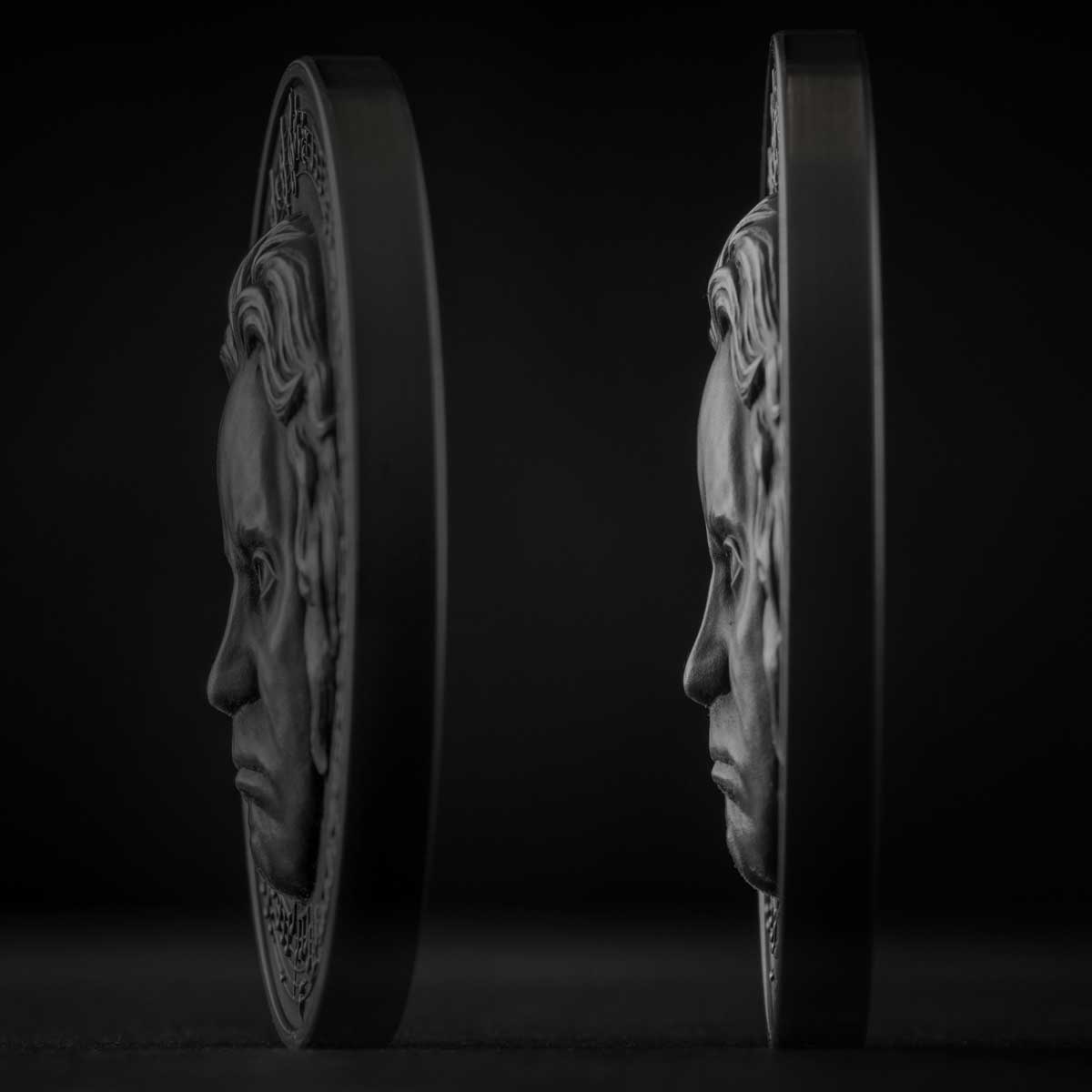Beethoven is 250 years old and Art Mint has him stare into your soul from its latest coin
We’ve seen just a few Beethoven coins this year. It is the great composers 250th birthday in 2020 and we expected to see quite a few more, but at least it isn’t the sad situation we had in 2014 when the Roman Emperor Augustus, one of the most influential figures in history, marked 2,000 years since his death and was widely ignored in numismatic circles. In my time with AgAuNEWS, it remains the biggest disappointment.
Even if there are no more Beethoven coins this year, we at least have a worthy commemoration of this exceptional talent, with Art Mint’s latest release. As you’d expect from this Paris-based producer, they’ve imbued the coin with something a little different. Beethoven’s visage is well known and accurate because in 1812, he allowed Austrian sculptor Franz Klein to make a life mask of his face, to use in making sculptures. What better way to mark the mans birth than to show us what he was in life.
Italian artist Sandra Deiana has done an outstanding job reproducing the life mask for the coin and you can see the plaster sculpts further down. This is no interpretation of the man, but a look at the face of a musical genius whose legacy is as bright today as it’s ever been. Even an East London caveman like me can appreciate Beethoven’s contribution to human culture. The face is surrounded by the musical notation he wrote as fluently as we would write a shopping list.
The obverse is a simple one, carrying his signature, under which are the dates of his life and death. A small diamond sits in the middle. Issued for Cameroon, all the relevant details are inscribed on this face, as they should be in our opinion, keeping the main face free of distraction. All told, a fitting tribute to a widely admired individual. If you’re an afficionado of the genre, look no further. Available to order now, only 250 pieces will be minted.
LUDWIG VAN BEETHOVEN
Born in the German city of Bonn in 1770, Ludwig van Beethoven was a composer and pianist widely lauded as being one of the greatest classical musicians of all time. Displaying a talent from an early age, he was driven hard by his father, Johann. He published his sons first work when Ludwig was just 13 years old. Ludwig was taught by the composer and conductor Christian Gottlob Neefe, himself a talented musician who went on to help Beethoven with some of his finest works.
When 21 years of age, Beethoven moved to Vienna, where he studied composition with the outstanding Haydn. After gaining a reputation as a virtuoso pianist, he wattracted the attention of Karl Alois, Prince Lichnowsky, who had Beethoven produce his three opus 1 piano trios in 1795. The First Symphony, his debut major orchestral work, was unveiled in 1800, with his first string quartets published the following year. His body of work is generally divided into his ‘early’ (-1802), ‘middle’ (1802-1812) and ‘late’ (1812-1827) periods. His iconic Fifth Symphony, was published in 1808.
It’s incredible to believe that from around 1800 he suffered from increasing deafness. By 1814, he was completely deaf, and only then gave up performing in public. His desire to write music continued unabated, adding new, brilliant works right up to his death in 1827. It’s sad that this incredibly talented man never got to hear the works he gifted to the world himself, except in his own mind. It’s a marvel that what he produced could have been done at all. That he wrote such beautiful sounds without hearing, marks him out as that rare example of someone totally at ease and in tune with their chosen passion, and like Mozart, will be remembered as long as humanity exists, in my view.
As for his best works, Symphony No.5 is about as iconic a composition as it’s possible to be, but Symphony No.6 ‘Pastoral’ is also up there. Those who heard it play while Saul was in the euthenasia suite in the Charlton Heston movie ‘Soylent Green’ will know how powerful that one is. Symphony No.9 ‘Choral’ is considered not only one of Beethoven’s finest, but one of the greatest works of orchestral music ever produced. That’s not even delving into a catalogue of sonatas, concertos and string quartets with few equals. A legend for a reason.
| SPECIFICATION | |
| DENOMINATION | 3,000 Francs CFA (Cameroon) |
| COMPOSITION | 0.999 silver |
| WEIGHT | 93.3 grams |
| DIMENSIONS | 50.0 mm |
| FINISH | Antique |
| MODIFICATIONS | Ultra high-relief, edge engraved serial no. |
| MINTAGE | 250 |
| BOX / C.O.A. | Yes / Yes |










Leave A Comment